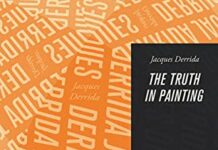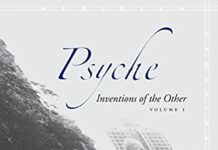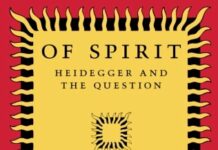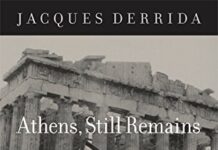
Ebook Info
- Published: 1985
- Number of pages: 360 pages
- Format: PDF
- File Size: 4.53 MB
- Authors: Jacques Derrida
Description
In this densely imbricated volume Derrida pursues his devoted, relentless dismantling of the philosophical tradition, the tradition of Plato, Kant, Hegel, Nietzsche, Husserl, Heidegger—each dealt with in one or more of the essays. There are essays too on linguistics (Saussure, Benveniste, Austin) and on the nature of metaphor (White Mythology”), the latter with important implications for literary theory. Derrida is fully in control of a dazzling stylistic register in this book—a source of true illumination for those prepared to follow his arduous path. Bass is a superb translator and annotator. His notes on the multilingual allusions and puns are a great service.”—Alexander Gelley, Library Journal
User’s Reviews
Editorial Reviews: About the Author Jacques Derrida (1930–2004) was director of studies at the École des hautes études en sciences sociales, Paris, and professor of humanities at the University of California, Irvine. Several of his books have been published in their English translation by the University of Chicago Press.
Reviews from Amazon users which were colected at the time this book was published on the website:
⭐Derrida gets a bad rap. I think most people don’t actually read him, but instead cast him in a stereotype as the figurehead for the entire skeptical, relativist, anti-humanist theory of postmodernism. He isn’t a charlatan, and he isn’t trying to destroy all knowledge. He puts perhaps too much emphasis on the stylistic aspects in language and leans too heavy on his little neologisms that don’t mean as much as he might want (i.e. differance, relever, etc.). But there is some great interpretations of Heidegger’s ontology, Hegel’s semiotics, Rousseau’s pre-linguistics, and the philosophy of existence against language. Sure, I don’t always agree with the guy, especially on the primacy of speech vs. writing (again, he lays too much stress on style and performance), but the breadth of ideas here is revealing for anyone interested in 20th century phenomenology and contemporary Continental philosophy, meaning the Western Canon.
⭐Excellent collection on linguistics, etymology, and especially their implications on interpretation which lead the “modern” astray
⭐Begin with “Tympan”, it’s designed to serve as an introduction to the ten essays which follow and, despite a lot of word play, Derrida does mention most of the themes informing this collection (philosophy’s attempt to master its domain, Hegel as the philosopher of limits, the threat metaphor poses to philosophical discourse, etc).Read “Differance” next (it’s probably the single most famous thing Derrida has ever written). After declaring the thought of difference to be crucial to our intellectual epoch (he mentions Saussure, Nietzsche, and Freud before taking up Heidegger’s notion of ontological difference) Derrida proposes the nonword/nonconcept of “differance” to go them all one better. This is a dazzling essay, but if it leaves you more exhausted than exhilarated, then Derrida just isn’t for you.Essay #2 is a dense and convoluted discussion of the metaphysics of presence in Aristotle and Hegel. Skip this.Essay #3 is a surprisingly interesting investigation of Hegel’s semiology (of all things). Derrida demonstrates that Hegel’s disdain for non-phonetic scripts (say, hieroglyphics) is not just a quirk, but is crucial to Hegel’s entire philosophical project.”The Ends Of Man” is a classic example of 1960’s French anti-humanism. It’s essentially an attempt to rescue Hegel, Husserl, and Heidegger from their existentialist interpreters. Another very famous piece (and rightfully so).Essay #5 is a sort of Cliffs Notes version of OF GRAMMATOLOGY; it deals with the denigration of writing in the thought of Saussure and Rousseau. Very readable.Essay #6 is all about Husserl’s theory of signs and I found it incomprehensible.Essay #7 concerns itself with to what extent the grammar and syntax of a particular language influences what can be thought in that language. Recommended, despite the opacity of Derrida’s criticisms of Benveniste.”White Mythology” is the longest and most demanding essay in this collection, so leave it for last. I’m not even going to venture a comment on this one.Essay #9 meanders quite a while before it gets around to illustrating Valery’s low opinion of philosophy, so be patient.The book wraps up with Derrida’s notorious reading/misreading of that wonderful little book, HOW TO DO THINGS WITH WORDS. This modest essay launched a feud between Derrida and the American philosopher John Searle. Much ado about nothing, I say.
⭐Jacques Derrida has provided us with an important text whose central concern is, arguably, “metaphor”. In leaving the reader discover the details of how philosophy exists within the margins of its own discourse, I want to simply and briefly map out a number of, what may be called, “conceptual metaphors”, that I have found captivating, intriguing and useful (for my own quest for difference). To start with, there is “differance”, and the reason why it can be treated as a conceptual metaphor is that it cannot be approached directly. As Derrida’s interest is in helping us discover ‘a new play of opposition, of articulation, of difference’ (p. xxviii), namely “differance”, we are however precluded from posing, let alone answering, the question “What is differance?”. This is because it is ‘neither a word nor a concept’ (p. 3), has ‘neither existence nor essence’ (p. 6), is ‘irreducibly polysemic’ (p. 8), a ‘temporisation’ and ‘spacing’ (p. 9), and is that which ‘produces differences’ (p. 11). It can therefore only be approached metaphorically, in its use as a tool operating on the margins of language and discourse for understanding difference in other authors (especially Hegel) and (of course) Derrida himself! “Differance” is by far not the only conceptual metaphor in this text: there are additional ones, which are in a way, related to “differance” and thus provide additional clues for getting closer to understanding its purpose and function. In particular, the Hegelian conceptual metaphor “pyramid” (an inspiration for Mark Taylor’s text ‘Altarity’) operating on the margins of signs and difference, in addition to that of “vibration”, as the movement of idealisation. Further, there is a useful parallel between de Saussure and Rousseau as regards “language”, and an account of its “interweaving” with other threads of experience, a conceptual metaphor found in Husserl. With Benveniste and Aristotle, Derrida deals with the issue of “category” as ‘one of the ways for “Being” to say itself or to signify itself’ (p. 183) in its relation to “thought”. Next, he gives an account of the nature of philosophical text and in discussing Aristotle and Bachelard among other thinkers, explains the role of “metaphor” as ‘the manifestation of analogy’ (p. 238) in carrying and emitting meaning – hence its important role in the logic of (philosophical) discourse. Finally, in discussing Valery, Derrida tackles the conceptual metaphor of “source” in the sense of origin and grounding. Overall, although it is a difficult text, it is captivating and must be read several times (ideally in conjunction with the French text) so as to (progressively) discover the multiple nuances and conceptual connections that Derrida is making in a style that decidedly relies on metaphor and différance. It is an important reading for anyone concerned with the notion of difference and its workings through and with language.
⭐Arrived in recyclable, reusable cardboard. Pristine condition.
⭐Thanks!
Keywords
Free Download Margins of Philosophy in PDF format
Margins of Philosophy PDF Free Download
Download Margins of Philosophy 1985 PDF Free
Margins of Philosophy 1985 PDF Free Download
Download Margins of Philosophy PDF
Free Download Ebook Margins of Philosophy





